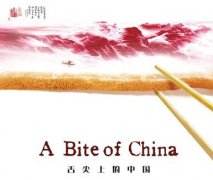人民币 不是你想的那么疲软
编辑:高中作文网 阅读 次The renminbi’s seemingly endless grind lower against the US dollar has been one of the financial stories of 2016, triggering a wave of capital outflows from China that Goldman Sachs estimates may have totalled $1.1tn since August 2015.
人民币兑美元汇率似乎跌跌不休,这已成为2016年金融领域的故事之一,引发了一波资本外流浪潮。据高盛(Goldman Sachs)估计,自2015年8月以来,中国资金外流规模或已达到1.1万亿美元。
The once closely controlled Chinese currency has tumbled 6.5 per cent to an eight-year low of Rmb6.945 against the greenback this year, taking its slide since August 2015 to 10.6 per cent.
曾经受到严密控制的人民币兑美元汇率今年下跌了6.5%,目前处在1美元兑6.945元人民币的8年低点,如果从2015年8月算起,跌幅则达到10.6%。
As increasingly panicky Chinese and foreign entities have sought to evade the ongoing devaluation of their renminbi holdings by getting money out of the country, capital outflows have surged, with estimates of their size ranging from the $520bn the Institute of International Finance believes was spirited out of China in the first 10 months of 2016 to Goldman’s $1.1tn figure.
中外各类实体越来越惊慌失措,为了避免自己所持的人民币资产持续贬值,他们纷纷寻求将资金转移出中国,这导致资金外流激增。各机构对中国资金外流规模有不同的估计,比较低的有国际金融协会(Institute of International Finance)估计的2016年头10个月流出5200亿美元,比较高的就是上文高盛的估计——自2015年8月以来流出了1.1万亿美元。
Yet, arguably, there is another interpretation of what is happening to the currency of the world’s second-largest economy, one which may help allay some of the panic.
然而,对于全球第二大经济体的货币当前的走势还有另外一种解释,它或许有助于缓解恐慌情绪。
Since the end of June, the renminbi has been remarkably stable against the trade-weighted basket of 13 currencies introduced by the People’s Bank of China in December 2015.
自今年6月底以来,人民币相对于贸易加权货币篮子的汇率一直非常稳定,这个篮子由13种货币组成,是中国央行(PBoC)在2015年12月推出的。
Having closed at an index level of 95.02 on June 30, the renminbi has oscillated in a range of 93.78 to 95.34, according to the weekly updates released by the China Foreign Exchange Trade System, an arm of the People’s Bank. The most recent figure, for December 16, shows a reading of 94.99, just 0.03 points below that of June 30.
根据中国央行下属的中国外汇交易中心(China Foreign Exchange Trade System)发布的每周更新数据,人民币汇率指数在6月30日收于95.02的水平,此后一直在93.78到95.34的区间内振荡。12月16日的最新数据显示,该指数读数为94.99,只比6月30日的读数低了0.03点。
“Although there has been a lot of talk about crisis or big problems against the dollar, [the renminbi] has held very stable in basket terms since early July,” says Robert Minikin, head of Asia FX strategy at Standard Chartered.
渣打银行(Standard Chartered)亚洲外汇策略主管罗伯特.米尼肯(Robert Minikin)表示:“尽管许多人都在说人民币兑美元汇率可能遭遇危机或者出现大问题,但自7月初以来人民币相对于货币篮子一直非常稳定。”
That this has been little noticed is largely due to the market’s (and indeed the media’s) almost total obsession with the renminbi’s bilateral rate against the dollar.
这一点却几乎没人注意到,这在很大程度上是由于市场(实际上是媒体)几乎把所有注意力都放在了人民币兑美元的双边汇率上。
Yet Zhou Xiaochuan, the governor of the People’s Bank, said in February that keeping the renminbi “at a broadly stable level” against the basket, would be the “keynote” of the bank’s new exchange rate regime.
然而中国央行行长周小川在今年2月份就说过,“保持一篮子汇率的基本稳定”,是人民币汇率形成机制的“主基调”。
Admittedly, Mr Zhou’s argument was somewhat undermined by the behaviour of the renminbi in the first half of 2016, when it fell 5.9 per cent against the basket, before finding stability in the second half.
无可否认,人民币在2016年上半年的走势多少削弱了周小川这一说法的可信性,期间人民币兑一篮子货币的汇率下跌了5.9%,下半年才稳定下来。
As a result, the currency has fallen almost as much against the basket as against the dollar this year, although the shape of the slide has differed sharply, with the renminbi’s 2.1 per cent fall against the greenback in the first six months of the year accelerating to a 4.5 per cent slide in the second half, as the first chart shows.
因此,今年以来,人民币相对于一篮子货币的跌幅和相对于美元的跌幅是差不多的,只是下滑形态迥异。如图一所示,上半年人民币兑美元汇率下跌2.1%,下半年跌幅则为4.5%。
But might something important have changed mid-year? Might the People’s Bank now be using its formidable currency intervention to achieve the target Mr Zhou outlined in February? Mr Minikin thinks so.
或许年中的时候有什么重要的事情发生了变化?或许央行正在利用其强大的外汇干预手段来实现周小川在今年2月提出的目标?米尼肯认为情况正是如此。
His argument is that the basket has been king since its introduction in December 2015 but that the renminbi’s starting level against the basket was problematic, given the currency’s “powerful upswing” in trade-weighted terms between the middle of 2014 and Aug 2015. (Over the longer term it rose more sharply still, as the second chart, based on an index drawn up by the Bank for International Settlements, indicates).
他的观点是,自中国央行2015年12月开始采用货币篮子以来,这个篮子一直是最重要的,但是考虑到人民币贸易加权汇率在2014年中到2015年8月期间“强势上扬”(在更长时间跨度内这个汇率升幅更大,见图二,该图基于国际清算银行(BIS)一项指数绘制),人民币相对于这个篮子的初始汇率水平是有问题的。
During the first half of 2016, the People’s Bank “took back roughly half of that overvaluation,” he says, allowing the currency to drift back towards a “truer” level.
他说,2016年上半年,中国央行“将高估的部分抹掉了差不多一半”,使人民币朝着“更真实”的水平回落。
“All along they were assessing the value of the currency on a trade-weighted basis, but at the beginning of this year the starting point was not a very good level to lock in because they were locking in the revaluation of 2015,” Mr Minikin says.
“他们一直在贸易加权的基础上对人民币进行估值,但今年年初的初始汇率水平并不适合锁定,因为当时锁定的是2015年人民币再估值后的水平,”米尼肯说。
However, with the trade-weighted renminbi seemingly reaching a level the People’s Bank was comfortable with by the end of June, since then “the authorities are doing exactly what they said they would do and pretty much what we think they should do,” he adds.
然而,到6月底时,随着人民币贸易加权汇率看似达到中国央行满意的水平,此后“当局所做的正是他们声称会做的事情,也和我们所想的他们应该做的事情差不多,”他补充道。
Not everyone shares this interpretation of events, however. Mark Williams, chief Asia economist at Capital Economics, says “there are two ways” of reading the situation, with one being that “since the middle of the year the People’s Bank has more formally adopted a peg against the basket”.
然而,不是每个人都认同这种解读。凯投宏观(Capital Economics)首席亚洲经济学家马克.威廉姆斯(Mark Williams)表示“有两种方式”解读这种情况,一种是“自年中以来央行更正式地采用了钉住货币篮子的机制”。
“I don’t think that’s right,” Mr Williams says, however. Instead, he believes the stability against the basket is more the result of the resurgence of the dollar, which fell on a trade-weighted basis in the first half of the year, before rallying in H2.
“我不认为这种看法是对的,”威廉姆斯说。相反,他认为,人民币对货币篮子的汇率保持稳定,在更大程度上是美元复苏的结果,今年上半年美元的贸易加权汇率走弱,然后在下半年回升。
Because of this, any continued renminbi depreciation against the basket in H2 would have led to a sharper fall still against the greenback.
因此,在今年下半年,人民币相对于货币篮子的任何进一步贬值都会导致人民币兑美元汇率出现更大幅度的下跌。
“If they had allowed weakness against the basket that would have led to more concerns about what is happening to the renminbi and more capital outflows,” Mr Williams says.
“如果他们让人民币相对于货币篮子走弱,就会导致们更加担忧人民币的走向,导致更多资本外流,”威廉姆斯说。
Instead, he argues that the People’s Bank has engaged in “opportunistic devaluation against the basket”.
相反,他认为,中国央行让人民币“对货币篮子进行了机会主义的贬值”。
In other words, when the dollar was falling, the PBoC felt able to let the renminbi weaken against the basket, but when the dollar rose, the central bank instead kept the renminbi stable against the basket, in order to minimise its decline against the resurgent greenback.
换句话说,当美元贬值的时候,中国央行觉得可以让人民币相对于货币篮子走弱,但当美元升值的时候,中国央行就让人民币相对于货币篮子保持稳定,以尽可能降低人民币对强势美元的跌幅。
Indeed, since November 8, when Donald Trump’s unexpected victory in the US presidential election set off a powerful dollar rally, the renminbi has strengthened in trade-weighted terms.
事实上,自11月8日唐纳德.特朗普(Donald Trump)在美国大选中意外取胜使美元开始强势上扬后,人民币贸易加权汇率走强了。
“You end up with these stop-start moves against the basket and the dollar,” says Mr Williams. “The issue is that, try as they might, the People’s Bank can’t get financial markets to focus on the basket.”
“到头来,央行对人民币的一篮子汇率和兑美元汇率采取这些起起停停的举措,”威廉姆斯说:“问题在于,尽管尝试过,但中国央行无法让金融市场关注货币篮子。”
Win Thin, global head of emerging market currency strategy at Brown Brothers Harriman, believes the renminbi’s steadiness against the basket since the end of June is little more than a reflection of Beijing’s desire for “some measure of stability”.
布朗兄弟哈里曼(Brown Brothers Harriman)新兴市场货币策略全球主管Win Thin认为,自6月底以来人民币相对于货币篮子的稳定只是反映出北京方面维持“一定程度的稳定”的意愿。
“The last thing they want is uncontrolled capital outflows. It’s not just China, we have seen outflows from most of the emerging markets,” he says.
“他们最不希望看到的是不受控制的资本外流。不仅仅是中国,我们在大多数新兴市场都看到了外流,”他说。
Despite this, Mr Thin says few people he comes across focus on the rate against the basket. “We look at the bilateral rate for our clients. Investors, politicians, everyone is still pretty much fixated on the dollar rate,” he says.
尽管如此,Win Thin表示,他接触过的人中很少有人关注人民币的一篮子汇率。“我们为客户关注双边汇率。投资者、政治人士,每个人依然基本只关注人民币对美元汇率,”他说。
Mr Minikin says an increased focus on the basket would help reassure people that China is not heading for the rocks.
米尼肯表示,更加注重货币篮子将有助于让人们放心,中国并非正在触礁。
“Over time, as market participants and corporates become more attuned to the new regime, people will realise that there isn’t any big China crisis or devaluation out there, so this will allow confidence to be restored,” he says.
“随着时间推移,市场参与者和企业将日益适应新汇率机制,人们会意识到中国不会出现什么大的危机或者贬值,这将促使信心恢复,”他说。
Nevertheless, even the StanChart man does see scope for turbulence ahead. His 2013 book The Offshore Renminbi: The Rise of the Chinese Currency and Its Global Future, outlined the turbulence faced by the Australian dollar when that currency was internationalised in the 1980s.
然而,即使是米尼肯,也看到未来有出现动荡的可能。他在2013年出版的著作《人民币的崛起:国际地位及影响》(The Offshore Renminbi: The Rise of the Chinese Currency and Its Global Future)讲到了澳元在上世纪80年代国际化进程中出现的动荡。
With Beijing now committed to allowing the renminbi to follow suit, he believes a few more bumps in the road may be inevitable.
北京现在正致力于让人民币走上同样道路,米尼肯认为,未来不可避免地还会再出现颠簸。




